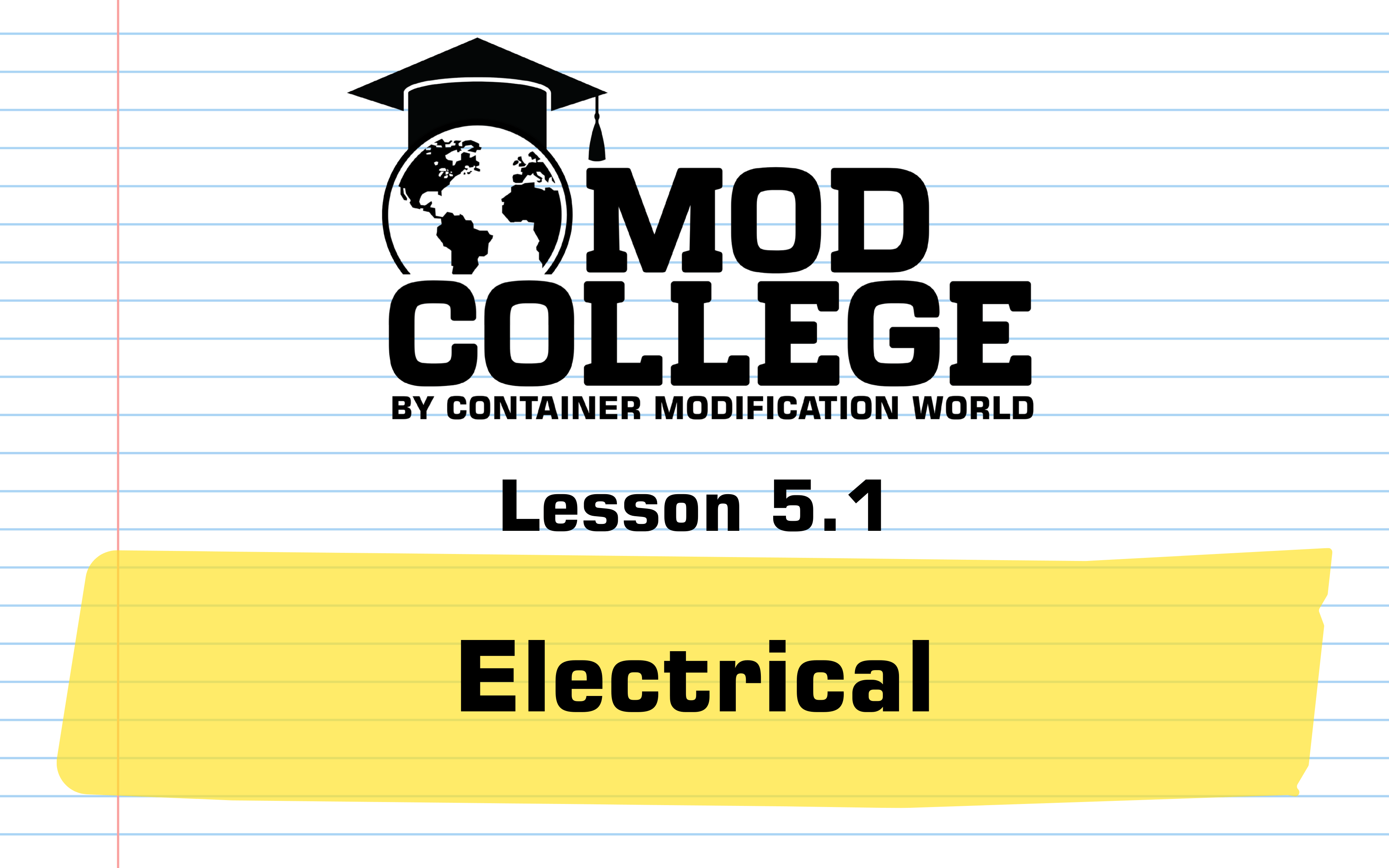
Once your container is framed and insulated, one of the next steps in any serious build is electrical. Whether you’re powering lights, tools, HVAC, or even a full home setup, a safe and well-planned electrical system is essential.
In this lesson, we’ll walk through the basics of planning container electrical, how it’s different from traditional builds, and how to keep things safe, accessible, and code-compliant.
What You Can Power Inside a Container
- Lights (interior/exterior)
- Outlets and USB charging stations
- Mini split HVAC or heaters
- Shop tools or machinery
- Security systems and cameras
- Fridges, microwaves, and small appliances
- Solar battery or generator tie-ins
Whether it’s a backyard office or an industrial job site, the load demand will determine your layout.
Step-by-Step Electrical Overview
Step 1: Plan Your Layout
Before you wire anything, sketch your container interior and decide:
- Where you need outlets (desk, bench, appliances, etc.)
- Where switches and light fixtures will go
- Where your electrical panel or breaker box will be mounted
- If you’ll need 220V vs. 110V power
- Where power is entering (underground feed, solar, generator, etc.)
Use Plan My Can to visualize your full layout.
Step 2: Choose Wiring Method
Most container builders use surface-mount conduit (like EMT or PVC) since it’s easier than cutting into steel.
- Use metal boxes and conduit for durability
- Run wiring through the framing before spray foam or insulation
- Keep access points for breakers and junction boxes exposed
Step 3: Install Panel and Connect
Install a sub-panel (or main panel) inside the container, usually on an end wall or framed interior wall.
- Use a breaker box appropriate for your amp service (30A, 60A, 100A, etc.)
- Label circuits clearly
- Ensure grounding is done properly (often to a grounding rod outside)
Always hire a licensed electrician if you’re not qualified, especially for 220V systems or off-grid tie-ins.
Solar, Generators, and Off-Grid Power
Many of our customers install containers off-grid or in rural settings where traditional power isn’t available.
Options include:
- Solar panels with battery banks
- Gas or diesel generators
- Hybrid systems that charge batteries and power loads simultaneously
If going off-grid, make sure you plan for inverters, charge controllers, and battery enclosures.
Safety & Code Considerations
- Follow local electrical code and inspection requirements
- Use GFCI outlets in damp or exterior areas
- Never run loose Romex or exposed wire without conduit
- Label all circuits and junctions
- Use weatherproof boxes for exterior outlets or lights
- Allow for future expansion (extra breaker slots or conduits)
For tips and tricks on running electrical through your container, check out this video by The Container Guy:
Product From CMW
While we don’t sell full electrical kits, many of our products are designed with electrical installs in mind:
Big Air Solar Vents
Include pre-wired solar fans that reduce humidity and reduce load on HVAC systems.
Framing Brackets
Allow for running electrical conduit between studs without welding to the container walls.
Pre-Framed Door & Window Kits
Give you clean wall sections and mounting options for light switches and outdoor sconces.



